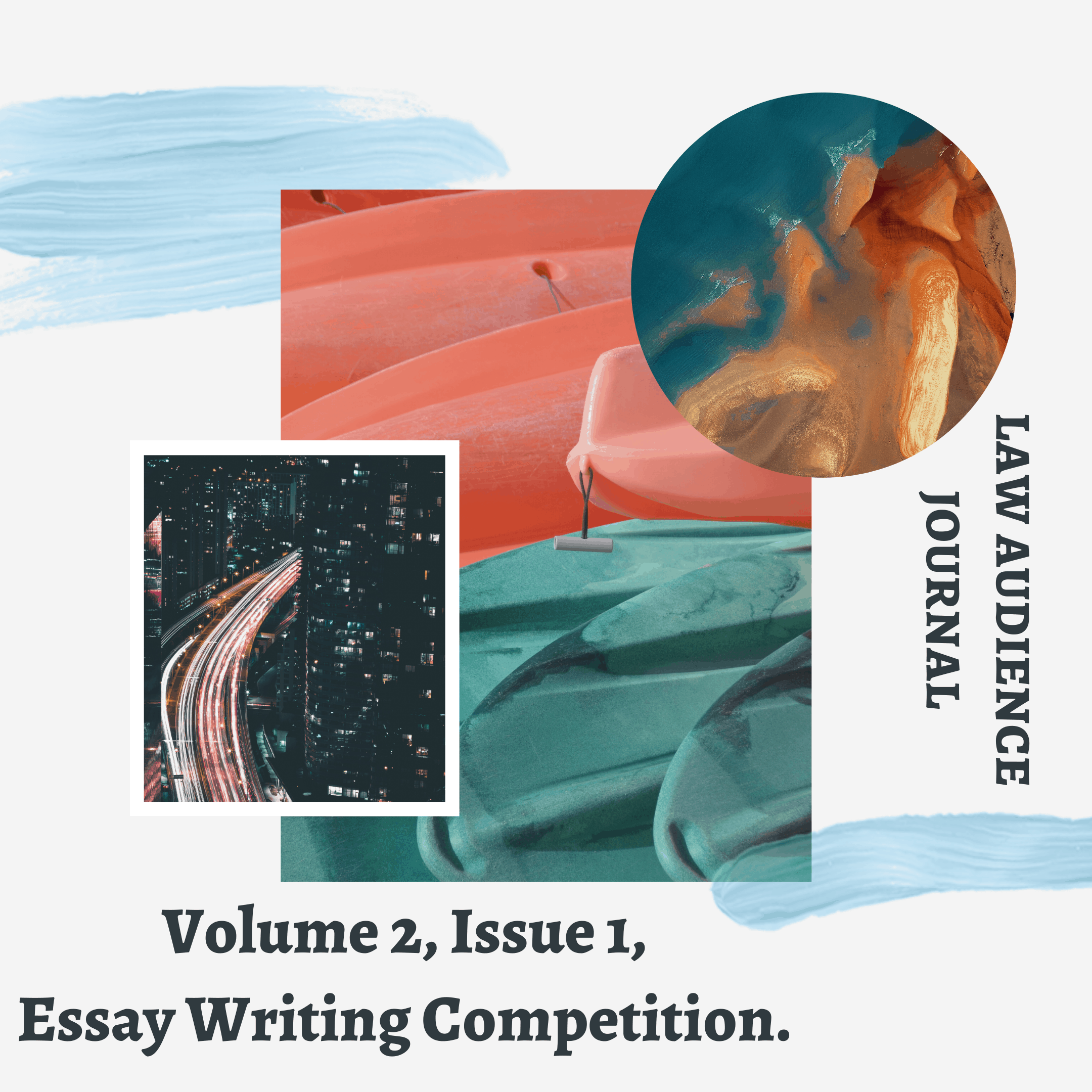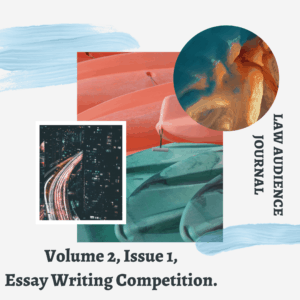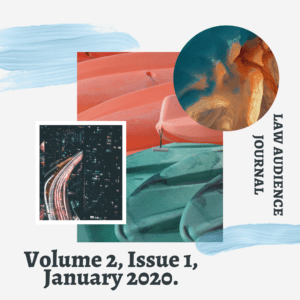Authored By: Ms. Chanchala Khopkar B.A.LL.B (Hons), New Law College, bharati Vidyapeeth, pune. Co-Authored By: Ms. Muskan Khandelwal B.A.LL.B (Hons), Banasthali Vidyapith University, Jaipur.
“I am what I am, so take me as I am ~ William Shakespeare”
The Justice Dipak Mishra quoted Shakespeare in his Section 377 Judgment, he also said that “No one can escape from their individuality so look for rainbow in every cloud”; all these quotes are for LGBTQ+ community which stands for Lesbian, Gay, Bisexual, Transgender, Queer (plus); it’s a community which is sexually different from cisgender. Amongst this community the transgenders were recognised in Indian mythology in the form of “ardhanareshwar” and “shikhandi in Mahabharat”; but LGBTQ+ is a broad community and this essay limits its scope to transgender only.
The transgender constitutes 0.04% of India’s population as per 2011 census, despite being such a small portion of the country they are subject to bigotry. They always lacked basic needs and rights due to people’s negative view of their sexual orientation; however , and Apex Court took some measures to ensure the protection of their rights. Recently, in the year 2018, Supreme Court[1] passed a judgment which partially repealed 158-year-old draconian provision i.e. Section 377 of Indian Penal Code which discriminated against gay sex and transgender identification and in the year 2019, the government passed the law i.e., The Transgender Persons (Protection of Rights) Act to ensure basic rights to transgender people. Despite these steps, the transgender community still lacks basic needs and rights, the reason being no guidelines or legislation formed after scrapping down of Section 377, and the 2019 Act was passed so haphazardly that it is considered as the murder of rights rather than protection, thereby these steps are considered as an impediment for them.
The first bill on transgender people was introduced in Rajya Sabha in the year 2014, it was considered as an “ideal law” as it was in conformity with Supreme Court’s NALSA judgment, but it was passed in upper house only, later in the year 2016 the lower house introduced Transgender Persons (Protection of Rights) Bill, 2016; it was highly criticised on many counts, around 100 amendments were suggested to the same but the government approved only 27 of it and with the dissolution of the house before 2019 elections, the bill lapsed. This bill was reintroduced in the year July 2019 after the formation of the government and was passed hurriedly passed by the lower house in August 2019 and by the upper house in November 2019, it received Presidential assent in December 2019.[2]
The Transgender Persons (Protection of Rights) Act, 2019, is considered as a regressive law due to majority of its provisions, few being the definition of transgender, the Chapter III of Act which states about certificate of identity, Chapter VIII offences and penalties, the punishments are not adequate under the Act, the authorities constituted under the Act, the rehabilitation centre clause and many more. The Act defines transgender as “transgender person means a person whose gender does not match with the gender assigned to that person at birth and includes trans-man or trans-woman (whether or not such person has undergone Sex Reassignment Surgery or hormone therapy or laser therapy or such other therapy), person with intersex variations, genderqueer and person having such socio-cultural identities as kinner, hijra, aravani and jogta.“[3]; the definition is exhaustive and general in nature, it lacks research as it fails to include cross-gender, transsexual, transvestite or cross-dressers people, furthermore, only a few socio-cultural identities are included in the Act. The definition also includes intersex people, however, all intersex people do not identify themselves as transgender which shows that this definition has been formulated with inadequate knowledge, putting intersex and transgender people in one box is barbaric as it sort of erases both the identities. The Act is for Transgender people but they are not being defined properly.
In the year 2014 the Supreme Court in its landmark judgment of National Legal Services Authority v. Union of India[4], recognised transgender as the third gender and held that they are entitled to equal access to education, jobs and other opportunities. Despite this recognition, the Act of 2019 in its Chapter III i.e., Recognition of Identity of Transgender Persons (Section 4 to Section 7) states that in order to be recognised as the third gender, the transgender people have to obtain a certificate of identity from District Magistrate (Section 5 and 6) and if they want to be recognised as male or female then they have to show that they had undergone a surgery and certificate will be assigned after the medical examination (Section 7); these provisions are a violation of their Article 21, Article 14 and Article 15 of Indian Constitution.
According to Article 14, there should be equality before the law and equal protection of the law and according to Article 15 there should not be any discrimination on the basis of race, caste, sex, religion or place of birth; however, the Chapter III of the Act violates the same by discriminating on the basis of sex as cisgender do not have to go under certain procedure or obtain a certificate from some authority in order to be recognised as respective gender, this sort of discrimination do not fall within the ambit of reasonable classification and therefore it is arbitrary to Article 14 and Article 15. Furthermore, such type of discrimination also derogates Article 21 as undergoing a medical procedure violates their right to privacy[5]; this certification is necessary to enjoy basic rights i.e., equal opportunities in jobs, education which gives a person means to live with dignity[6] in the society; both being the fundamental rights under Article 21. The Chapter III of the Act violates the golden triangle of Constitution, as just to avail basic necessities, a person has to undergo a procedure and obtain a certificate, which thereby makes it miserable for transgender people to stand at similar footing with cisgender.
According to criminal jurisprudence and positive school of law, there should be similar punishment for the same class of offence, the gravity and term of punishment can only differ depending on offender’s age, state of mind. The Chapter VIII offences and penalties i.e., Section 18 of the Act punishes a person for minimum 6 months to maximum 2 years, if he commits an offence of sexual, verbal, physical, emotional and economic abuse to transgender; this section has combined all the kind of abuses under one head and imposed same punishment for each kind of abuse.
However, under Indian Penal Code, 1860 all kinds of abuses are under different head [Section 354, Section 354A, Section 354B, Section 376, Section 498A, Section 499] and if combined the punishment for these offences is 3 years which may extend to life imprisonment and the death penalty, depending upon the kind of abuse. The transgender community is the one who faces abuse on a daily in some way or the other, either in school, colleges, work institution, public transport everywhere and still the punishment is not severe in nature. This disparity between punishments for the same class of offences is also violating Article 14 and Article 21 of the Indian Constitution[7].
The person identifying as transgender is not an illness which should be treated, it is natural in nature. Section 12 of the Act states that if the parents or member of immediate family is unable to take care of transgender person then such person shall be moved to a rehabilitation centre with the order of Court. The general meaning of term ‘rehabilitation’ means the action of restoring someone to health or normal life through training and therapy after imprisonment, addiction, or illness; identifying as transgender is not an illness and separation of the person from an immediate family is not a solution. However, if the environment of transgender person’s family is hostile then that person shall be transferred to a shelter where they could have access to all the facilities, moreover, the government has not mentioned anything about the rehabilitation homes i.e., environment, facilities, accessibility, this thereby makes this provision only on paper as it lacks the action-pan. Furthermore, the Supreme Court in the case of Shantisar Builders v Narayan Khimlal Totame[8], has held that right to shelter is a part of Article 21 as it is the basic right to have food, clothing, decent environment and a reasonable accommodation to live in under the ambit of right to life; therefore the non-explanation of conditions of the rehabilitation centre and separation of the person from immediate family infringes Article 21.
Furthermore, the authorities constituted under Chapter VII of the Act are for addressing grievances and issues faced by transgender people but the constitution of these authorities do not include a single person from the transgender community. It is very important to include a person from the transgender community for better understanding of the issues faced by a person and to arrive at an amicable solution, also it’s a sense of security for the transgender person that someone in authority could relate and understand their problem.
Section 11 of the Act states that every establishment must have a complaint officer to address the problem of transgender person but the qualification of such officer hasn’t been mentioned in the Act. These provisions lack implementation plan.
The analysis of the aforementioned provisions of Transgender Persons (Protection of Rights) Act, 2019, clearly suggests that it is a regressive legislation. While the making of Act neither a single person from the transgender community was included in the discussion nor any suggestions were taken from them, it shows that law is mere namesake law as at every point it lacks action plan.
Furthermore, Chapter VI of the Act states about welfare measures by the Government but again no guidelines or provisions have been created for its implementation. It is important that the government should take steps to change the mentality of people about LGBTQ+ community by conducting campaigns, organizing skits, making movies, serial, advertisements and by undertaking various other awareness programmes. Before passing this legislation, the Government should have conducted adequate research and included people from the transgender community while making law, in order to make it a de facto law rather than de jure law.
This legislation is clearly made on assumptions and stereotypes; the ground reality hasn’t been taken into consideration. Therefore, this legislation is merely on paper which excludes action-plan. For ensuring proper implementation of this law certain amendments as suggested must be done.
[1]Navtej Singh Johar v. Union of India, AIR 2018 SC 4321.
[2]Chaitanya Mallapur, why new bill meant to benefit Transgender People is termed Regressive, INDIASPEND (August 22, 2019), https://www.indiaspend.com/why-new-bill-meant-to-benefit-transgender-people-is-termed-regressive/.
[3] Transgender Persons (Protection of Rights) Act, 2019, No. 40, Sec 2(k), Acts of Parliament, 2019 (India).
[4] National Legal Services Authority v. Union of India, (2014) 5 SCC 438.
[5]Justice K.S. Puttaswamy (Retd.) and Anr. v. Union of India and Ors, (2017) 10 SCC 1.
[6] Francis Coraile v. Administrator, Union Territory of Delhi, AIR 1981 SC 746 (India).
[7] Maneka Gandhi v. Union of India, AIR 1978 SC 597.
[8]Shantisar Builders v Narayan Khimlal Totame, AIR 1990 SC 630 (India).


